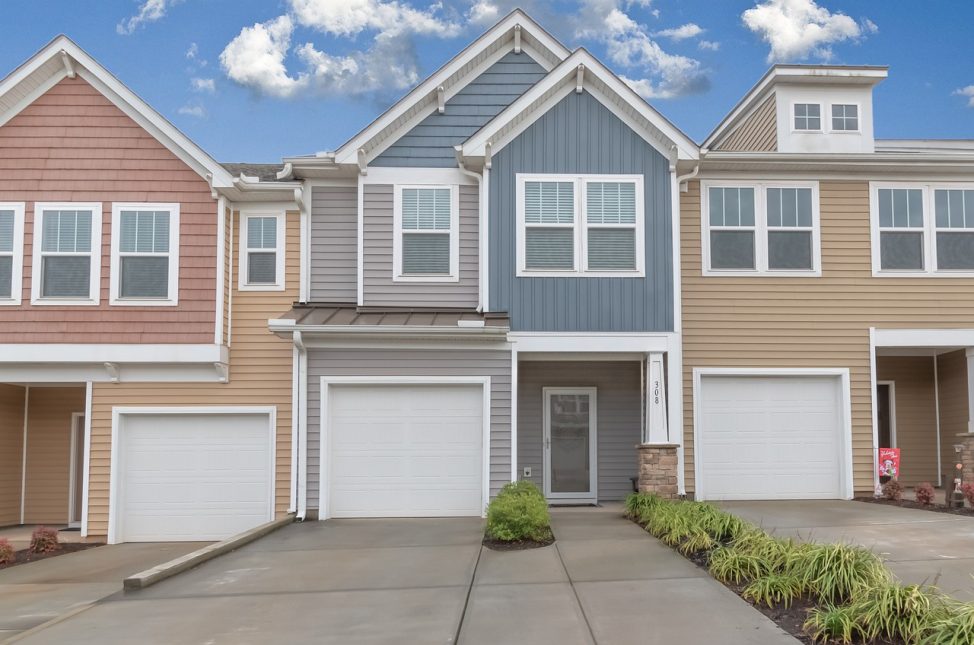

Contact an expert agent for a free, no-obligation consultation today!
We’re sorry to say that party walls aren’t walls where parties are hosted, so you can stop worrying about when you need to supply the wine. Unfortunately, the definition is way more boring than that, even though sometimes, late at night, when you’re trying to sleep, you can hear a party going on … on the other side of the wall.
In real estate, a party wall is a shared wall that separates two separately rented or owned units. Party walls are most commonly found in apartments, condominiums and office complexes, where different tenants share a common structure. Party walls can be a non-structural wall, but laws in various jurisdictions outline requirements for how party walls must be constructed.
In addition to shared walls inside a home or condo, party walls also include those attached and adjacent to the property (like fences for example) that run through your yard and are on both properties, or anything else that might be standing on the land of two or more owners, whether that’s a wall or some other shared structure.
Party walls are sometimes built with additional insulation, so that sound (the “party” for example) from an adjoining unit does not disturb neighbors. In addition, some building codes require party walls to be built as fire walls, with noncombustible material extending from the foundation to the roof. If a fire occurs in one unit, this fire wall will help slow the spread of the fire into adjoining units. And not only is this safer for the people living or working there, but it also helps to contain fires and hopefully limit property damage.
More after jump! Continue reading below ↓
Save Thousands when you work with Trelora. Learn how!

First off, it’s better to be safe than sorry, right? But, if you’re more of a risk-taker, you should still create a party wall agreement. And if you’re trying to refinance your home, your loan provider will probably want to see a party wall agreement, if there is a shared wall. And having to last-minute rush to an agreement with a neighbor? That’s not always an ideal situation.
Party walls often are seen and taken for granted, particularly in rental units, where you know you’re already sharing a wall or two with your neighbors. But think of row houses and commercial structures sharing walls. Which of the owners claim the shared walls – is it one, both? Although party walls may be quite common, party wall agreements are unusual, but they can be super important, if there is ever a problem.
And often the multiple owners do not consider anything about the party wall until something happens. When an issue with a shared wall takes place, suddenly everybody is concerned, and here is where there will be difficulties, particularly if there is no agreement.
Traditional party wall principle in theory maintains that each owner possesses as much of a party wall as is located on their land. Essentially, each owner acquires title to one-half of the wall, if that’s how it measures up, and each owner also secures an easement for the support of the party wall. The easement here is a right of use over the property of another, shared obviously commonly.
A party wall agreement takes account of these traditional principles and stipulates rules around ownership and maintenance obligations for the shared party wall. The goal of a party wall agreement is to anticipate and solve disputes between parties, before they ever happen – which of course, hopefully will never happen, but if they do, presto, there is the party wall agreement.
The party wall agreement should define clearly which party is obligated to maintain the wall, as well as the repercussions if that wall is not maintained. And typically, a party wall agreement requires the owners to maintain their portion of the wall together and in concert.
The party wall agreement will additionally cover how the two owners deal with shared expenses such as insurance, structural problems, roof upkeep and replacement, foundation and shared utility lines. It may also include routine maintenance and the construction of other improvements such as fences and sheds in connection with the party wall.
Such an agreement will also stipulate rules regarding an owner’s rights to alter the wall. For example, a party wall agreement might say that both parties can hang frame pictures on the wall, or that both parties can paint the wall, etc. And then hopefully, the agreement also stipulates that for one party to make structural changes to the party wall, it would require the consent of both parties, which of course makes sense since both owners share the wall, and any structural changes would necessarily affect both owners.
Some parts of a party wall agreement should state what one owner can pursue from another owner if one owner defaults on their end of the agreement to ensure that this doesn’t happen and that there is a solution if it does. Many party wall agreements also can be set up to “run with the land,” meaning any time an owner sells their unit, the new owner is subject to the same agreement as the last owner.
Once owners legally consent to the terms involved, party wall agreements are recorded in the land records, whether (typically) at the county clerk or somewhere else. By including the party wall agreement in the public records, prospective buyers looking at a property with a party wall can understand better the property they are considering purchasing.
If the party wall agreement is already part of the HOA in your condo, townhouse, apartment complex, then typically it can’t be refused when a tenant/owner moves in, since it likely already is in place for other units. That said, certainly a prospective buyer can refuse the party wall agreement, if of course, they’re refusing to buy or rent the property in the first place. Additionally, if two people are building a new party wall agreement together, then of course there will be some refusal and compromise as the party wall agreement is constructed for the first time. But once it’s in place at the county clerk’s office, it’s a legal document.
What if things change over time for whatever reason, and maybe some of the conditions of the agreement no longer make sense? Naturally of course, both owners will want to review the party agreement as it currently stands together, note what needs to be changed, and re-submit it to the proper folks in order to replace the one that’s already on the record.
If you’re legally capable, and your neighbor is willing, then why not create the document yourself? Eventually and typically, you’ll have to have it examined and agreed to legally, but there’s no stopping you from doing that on your own in the meantime. Sometimes it makes more sense to do it that way anyway, start it informally, and then your neighbor can also participate and work on it with you to agree upon particulars. Nothing is more neighborly than working on it together.
Christopher has been been in the Real Estate industry for 8 years and has had the opportunity to close over 1,000 deals while acting as the Managing Broker for thousands more. Christopher is passionate about continuing to find ways to simplify, maximize, and serve Trelora’s clients exceptionally well and spends his time building teams to deliver high levels of service. When not doing real estate Christopher can be seen training for marathons and ultra relays with his 2 year old daughter, eating pizza, and drinking a steady stream of Diet Coke.